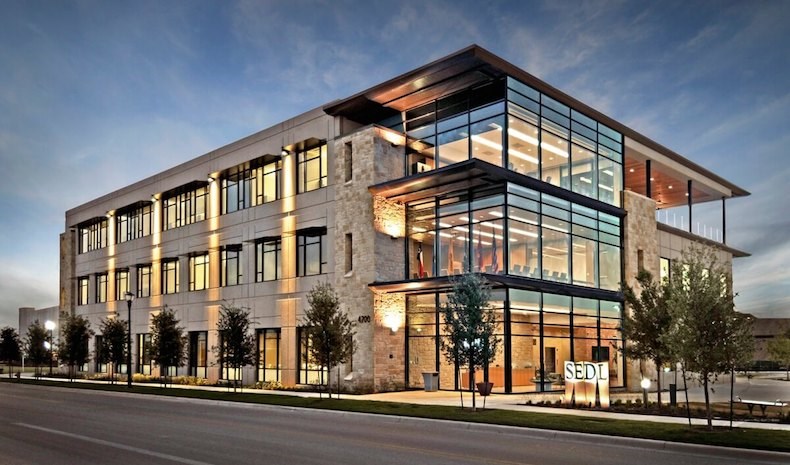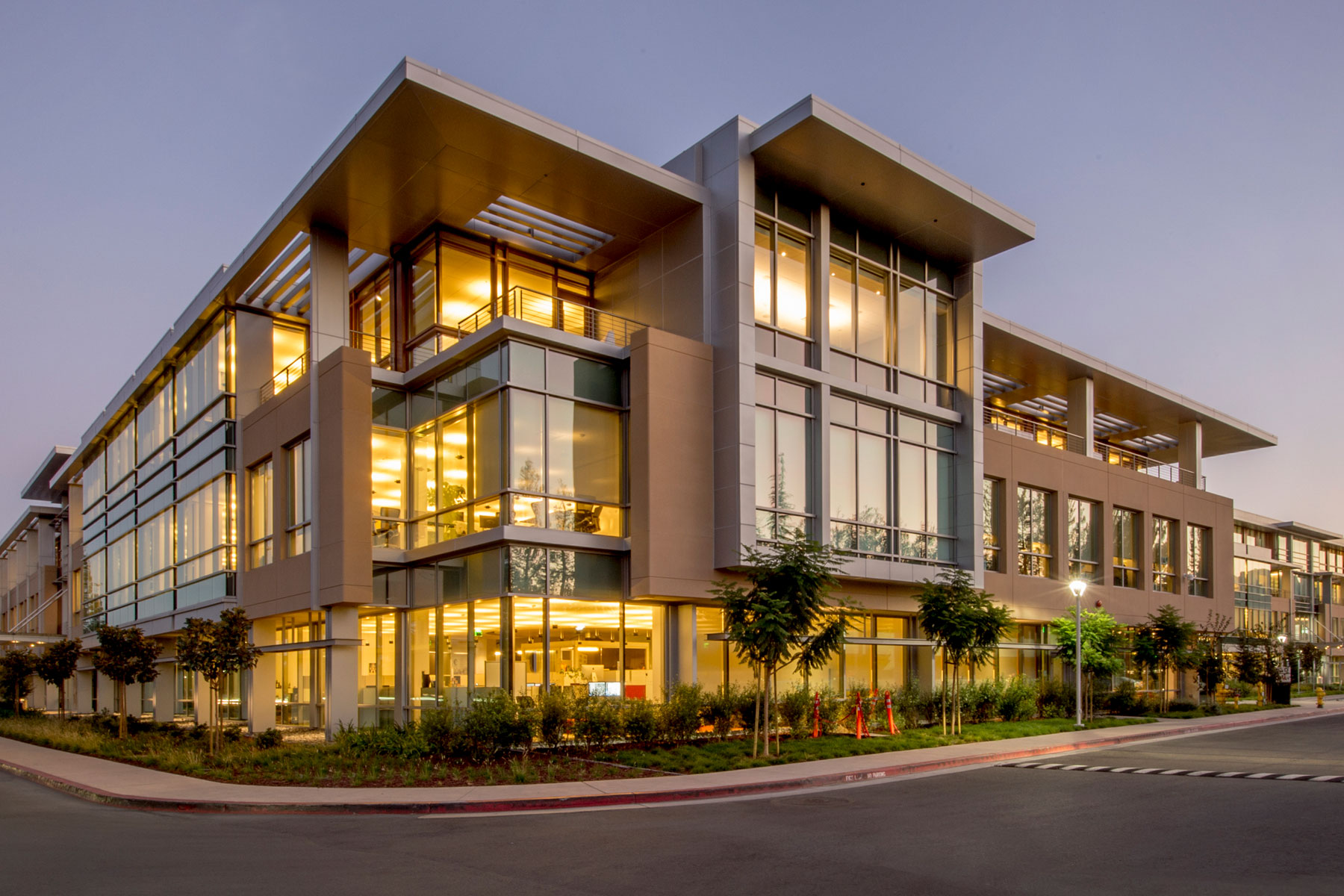Discover the Innovative Providers Supplied by Commercial Architects for Your Following Task
Commercial architects play a crucial duty fit the constructed environment. They blend capability with aesthetic allure, creating areas that reverberate with brand identification. These professionals employ ingenious design services, lasting methods, and progressed technologies to enhance user experiences. Their joint strategy guarantees positioning with client visions and functional requirements. Nevertheless, the level of their services usually extends beyond style. The next actions in understanding just how these architects navigate complex task needs may surprise you.
Comprehending the Role of Commercial Architects
Although the role of business architects may differ depending on the certain task, their primary feature focuses on creating useful and aesthetically enticing spaces for services. These professionals are charged with recognizing the special demands of each client, whether it be a retailer, workplace building, or industrial facility. They conduct thorough website analyses and team up with stakeholders to guarantee that the layout aligns with business objectives and brand identity.Commercial architects also browse various regulatory demands, securing conformity with zoning laws and building ordinance. Their proficiency encompasses producing lasting styles that promote energy efficiency and environmental obligation. In addition, they manage the job's timeline and budget plan, collaborating with contractors and engineers throughout the building procedure. By mixing imagination with technical understanding, industrial architects play a necessary function in transforming theoretical ideas right into substantial realities, inevitably improving the performance and charm of commercial rooms.
Cutting-edge Style Solutions for Unique Rooms
As commercial spaces significantly require distinctiveness to stand out in affordable markets, cutting-edge design options have actually become essential for architects. These experts take advantage of their creativity and technological competence to craft special settings that reflect brand identity and improve user experience. By integrating cutting-edge modern technology and products, industrial architects can transform regular rooms into captivating venues that engage customers and inspire employees.Architects utilize various approaches, such as adaptive reuse, which revitalizes existing structures while protecting their historical value. They additionally check out unique formats and multifunctional spaces that provide to varied requirements, making sure versatility for future growth.Furthermore, the consolidation of biophilic layout-- bringing nature inside your home-- develops inviting ambiences that advertise wellness - commercial architects. This attention to detail in ingenious design not only addresses visual problems however also promotes neighborhood and partnership. Ultimately, these tailored solutions enable companies to prosper in an ever-evolving landscape, establishing them apart from competitors
Sustainable Design Practices
Lasting design practices have actually become a critical emphasis for industrial architects looking for to create impactful layouts that resonate with environmental stewardship. These techniques focus on using renewable energies, energy efficiency, and very little waste, mirroring a commitment to minimizing the eco-friendly impact of buildings. Architects include products that are sustainably sourced or recycled, making sure that building approaches line up with ecological principles.Furthermore, the integration of green roofs and walls improves biodiversity while boosting energy efficiency. Efficient water management systems, such as rainwater harvesting, add to sustainability by saving water sources. All-natural air flow and daylighting techniques are likewise utilized to optimize interior environments, decreasing dependence on synthetic heating and lighting.
Integrating Innovation in Architectural Designs
A raising number of business architects are welcoming innovation as a transformative aspect in building style. By leveraging sophisticated software program devices such as Structure Info Modeling (BIM), architects can develop in-depth 3D depictions of jobs, allowing for enhanced visualization and partnership amongst stakeholders. This technology facilitates real-time adjustments, reducing errors and enhancing the layout process.Additionally, architects are incorporating smart building technologies into their layouts, which improve power performance and occupant comfort. Functions such as automated lights, climate control, and protection systems can be effortlessly incorporated, promoting sustainable methods and lowering functional costs.The use online and enhanced truth also allows clients to experience designs before building begins, providing vital understandings right into spatial partnerships and visual selections. Inevitably, the combination of innovation in architectural designs not only fosters development but likewise ensures that projects are blog here executed with accuracy and lined up with modern needs.

Project Monitoring and Coordination Solutions
Reliable task management and sychronisation solutions are vital for the effective implementation of commercial building jobs. These services assure that all aspects of a project, from first design to final building, are seamlessly incorporated. Commercial architects play a significant function in coordinating in between numerous stakeholders, consisting of customers, specialists, and distributors, to preserve clear interaction and placement on task goals.By implementing structured approaches, architects can manage timelines, try this out budget plans, and sources effectively, reducing hold-ups and cost overruns. They utilize task administration software program and devices to track progression, handle documentation, and promote collaboration among group members.Additionally, these services include threat analysis and reduction approaches, validating potential difficulties are recognized and addressed proactively. The outcome is a structured procedure that boosts total job performance and top quality, inevitably bring about an effective end result that satisfies the client's vision and expectations.
Regulatory Compliance and Zoning Support
Effective regulatory conformity and zoning support are necessary for the success of any type of industrial job. Architects should possess a deep understanding of neighborhood laws and zoning regulations to guide customers through the complexities of the approval process. This expertise not just assures adherence to lawful requirements however also helps maximize job style and performance.
Browsing Local Rules
Exactly how can commercial architects guarantee their layouts line up with regional regulations? By staying educated about the ever-evolving landscape of building ordinance and local ordinances, architects play an essential role in guaranteeing conformity. They conduct detailed study to comprehend the certain policies controling materials, safety and security standards, and building approaches applicable to every task. Collaborating carefully with neighborhood authorities, commercial architects can navigate with the complexities of regulative structures effectively. They likewise assist in needed permits and examinations, streamlining the authorization process. This proactive technique not just reduces prospective lawful complications however also improves task effectiveness. Inevitably, their expertise in maneuvering regional guidelines encourages customers to recognize their vision while sticking to all needed criteria and standards.
Zoning Regulation Competence
Zoning legislation know-how is essential for business architects guiding via the intricacies of land use guidelines. These architects possess extensive understanding of regional zoning codes, which regulate residential property development, land use, and structure specs. By understanding these guidelines, they assist customers browse the usually elaborate authorization processes required for construction tasks. Their competence warranties conformity with zoning legislations, lessening the threat of job delays or legal complications.Additionally, industrial architects supply valuable assistance in getting essential authorizations and variations, promoting smoother communications with neighborhood authorities. They also offer critical referrals to optimize site design and make best use of the potential of a residential or commercial property while sticking to zoning limitations. Inevitably, their zoning legislation proficiency plays a crucial duty in the successful understanding of business jobs.
Collective Strategies With Customers and Stakeholders
Successful business architecture rests on the capacity to cultivate solid partnership with customers and stakeholders throughout the layout process - commercial architects. Architects take part in open dialogues, guaranteeing that all events' visions and demands are incorporated into the task. This collaborative approach starts in the first stages, where architects perform workshops and conceptualizing read what he said sessions, allowing customers to express their goals and concerns.Stakeholder input is equally essential; architects typically arrange meetings with neighborhood participants, neighborhood governments, and other relevant entities to gather diverse viewpoints. By using visualization devices, such as 3D modeling, architects facilitate better understanding and communication.This iterative comments process not only improves layout quality but also builds depend on, causing even more effective end results. Inevitably, the joint viewpoint of industrial architects changes concepts right into useful rooms that mirror the aspirations of clients and the more comprehensive community, making certain a harmonious connection throughout the task lifecycle

Frequently Asked Inquiries
What Is the Common Timeline for a Commercial Design Project?
The regular timeline for an industrial architecture job varies, usually covering 6 to 18 months. Aspects influencing this duration consist of job intricacy, regulative authorizations, and customer responsiveness, impacting each stage from design to building and construction completion.
Just How Do Commercial Architects Fee for Their Services?
Commercial architects generally bill based on job extent, complexity, and size. Usual fee structures consist of per hour rates, dealt with fees, or percentage-based fees determined from the complete construction expense, ensuring transparency and placement with customer expectations.
Can Commercial Architects Aid With Interior Layout?
Commercial architects can certainly assist with indoor style, incorporating performance and appearances. Their experience warranties cohesive spaces that line up with building vision, improving customer experience while fulfilling regulative needs and client purposes via cutting-edge design services.
What Sorts of Clients Do Commercial Architects Usually Collaborate With?
Commercial architects generally collaborate with diverse clients, including services, federal government entities, schools, and non-profit organizations (commercial architects). Each customer looks for tailored architectural remedies to fulfill certain functional and visual requirements for their tasks and settings
Just How Do Commercial Architects Stay Updated With Design Patterns?
Commercial architects stay upgraded with style fads with constant education, going to industry conferences, involving in specialist networks, and researching arising modern technologies. They additionally work together with other professionals to obtain understandings into innovative materials and style methods.